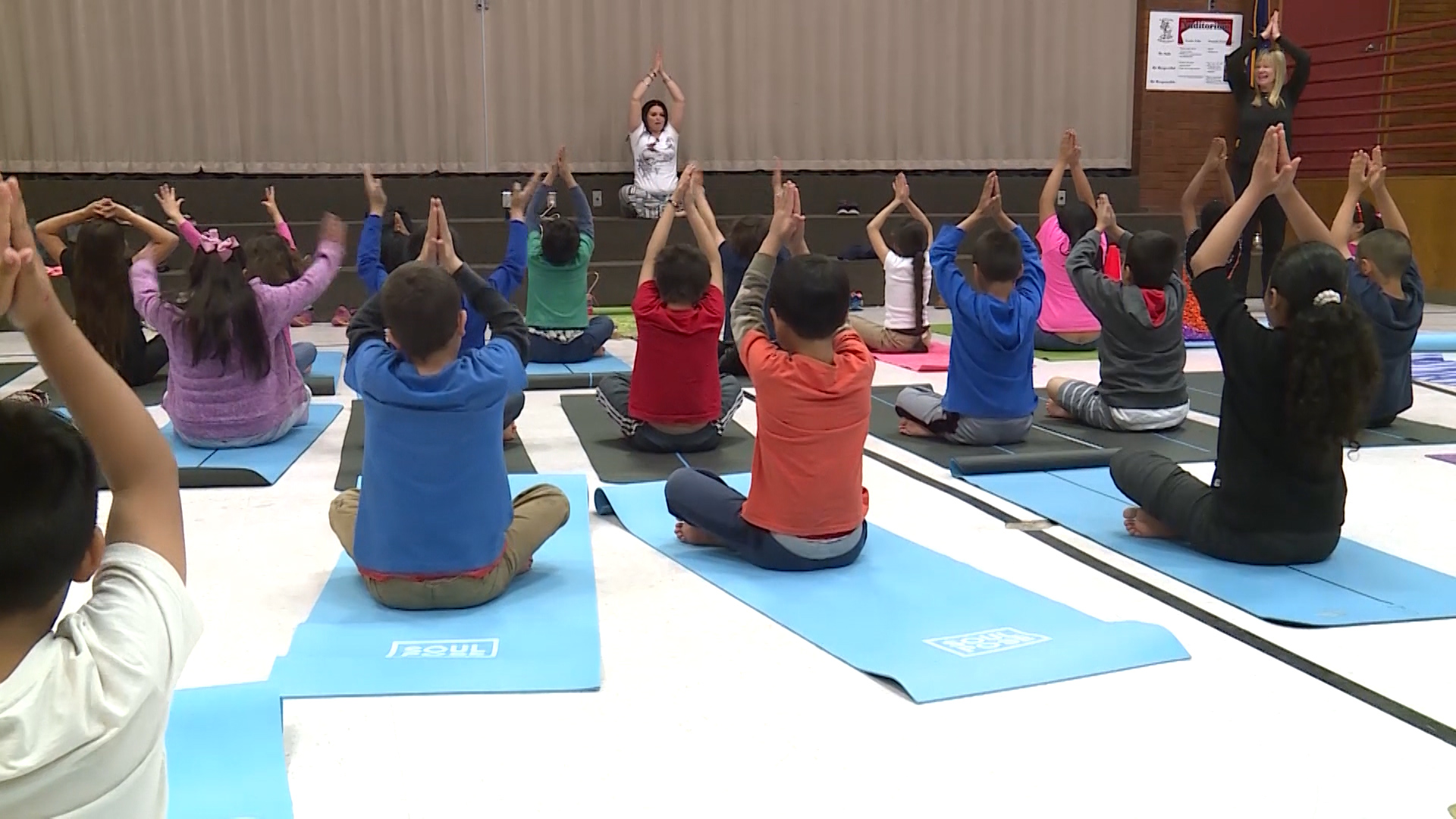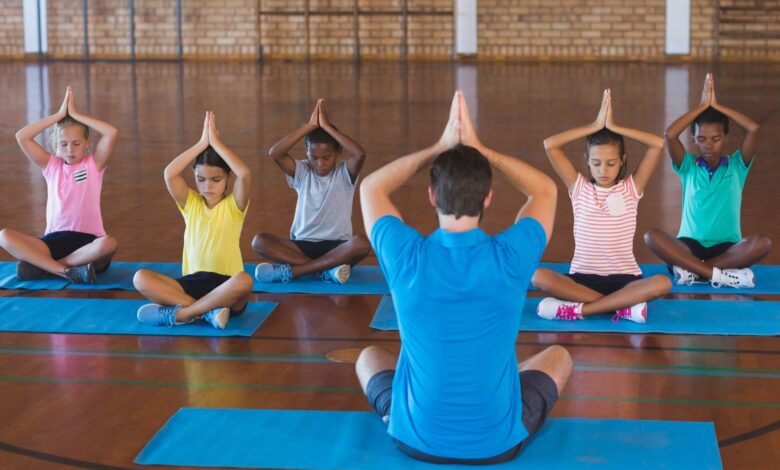In recent years, yoga has become a staple in many American schools, with educators and advocates touting its benefits for students’ mental and physical well-being. However, this growing trend has sparked heated debates, particularly among religious groups who question whether yoga’s spiritual roots make it incompatible with their beliefs. The central question remains: Is yoga demonic?
This article explores the cultural, religious, and educational dimensions of yoga in the United States, examining the controversies surrounding its integration into school systems and the concerns raised by religious communities.
The Rise of School-Based Yoga
Yoga is increasingly being introduced in U.S. schools as a way to help students manage stress, improve focus, and enhance overall well-being. According to a 2015 survey by New York University psychologist Bethany Butzer, over 940 schools across the country have implemented yoga programs, with more than 5,400 certified instructors involved.
These programs often include short, in-classroom exercises that allow students to take a few minutes to stretch, breathe, or engage in mindfulness activities. Some schools offer yoga as an elective, while others integrate it into physical education classes.
Proponents argue that yoga helps students develop better self-regulation, reduce anxiety, and improve academic performance. A 2009 study published in the Journal of Child and Family Studies found that mindfulness-based cognitive therapy, which includes elements of yoga, was linked to reduced anxiety and improved attention levels in children.
However, not everyone is convinced. Critics argue that the spiritual aspects of yoga—such as chanting “om” or using Sanskrit terms—can be seen as promoting non-Christian beliefs, leading to controversy in some communities.
Religious Concerns and the “Demonic” Debate
One of the most vocal criticisms of yoga comes from certain Christian groups, who believe that its origins in Hinduism and Buddhism make it incompatible with their faith. Some argue that yoga’s spiritual practices, such as meditation and the use of mantras, could open the door to “demonic” influences.
Dave Fetcho, a former leader of the Ananda Marga Yoga Society, has stated that physical yoga is “inheritably and functionally incapable of being separated from Eastern religious metaphysics.” This perspective suggests that even secular forms of yoga may carry underlying spiritual meanings that conflict with Christian teachings.
The concept of kundalini, a key element in many yoga traditions, has also raised concerns. Kundalini refers to the awakening of a dormant spiritual energy at the base of the spine, which is believed to lead to heightened consciousness and spiritual enlightenment. Some critics liken this process to a form of “divinization,” where practitioners seek to elevate themselves to a godlike state.
For Christians, this idea can be troubling, as it contrasts with the belief in a transcendent, personal God. The Vatican has also expressed concerns about certain forms of meditation, warning that they could lead to “spiritual privatism” that excludes openness to God.
Cultural Controversies and Public Backlash
The debate over yoga in schools is not just religious—it also reflects broader cultural tensions. In 2016, an elementary school in Cobb County, Georgia, faced significant backlash after introducing a yoga program. Parents objected to the use of “namaste” and mandala coloring books, arguing that these practices promoted non-Christian beliefs.
Similar controversies have occurred in other parts of the country, including San Diego and Alabama, where yoga programs have been challenged on the grounds that they are inappropriate for public schools. In Alabama, the state board of education long maintained a ban on yoga in schools, a policy that resurfaced in 2023 when a document listing yoga as a prohibited activity in “gym class” was circulated.
Critics argue that yoga’s spiritual roots make it unsuitable for public education, while supporters counter that the practice is largely secular and focused on physical and mental health.
The Secular vs. Spiritual Divide
While yoga has deep spiritual roots, many modern practitioners view it as a purely physical exercise. This distinction is crucial in understanding the ongoing debate. Some schools and teachers have made efforts to remove religious elements from yoga programs, focusing instead on breathing techniques, stretching, and mindfulness.
Marlynn Wei, a psychiatrist and yoga instructor, acknowledges that while traditional yoga has spiritual components, it can be adapted to suit secular settings. She argues that removing Sanskrit words and symbols allows yoga to retain its mindfulness benefits without the religious connotations.
However, some parents still see any reference to yoga as a form of “indoctrination.” As one mother in Georgia put it, “No prayer in schools. Some don’t even say the Pledge [of Allegiance], yet they’re pushing ideology on our students.”
The Broader Implications for Education
The debate over yoga in schools highlights larger questions about the role of religion in public education. While the First Amendment prohibits government-sponsored religious activities in schools, it does not prevent students from engaging in personal religious practices.
This tension has led to calls for greater transparency and inclusivity in school-based wellness programs. Some educators argue that yoga should be presented as a tool for mental and physical health, rather than as a spiritual practice.
At the same time, critics warn that removing all references to yoga’s origins risks misrepresenting the practice. They argue that acknowledging its cultural and historical context is essential for a full understanding of what yoga is and how it can benefit students.
Conclusion: Navigating the Complexities of Yoga in America
The question of whether yoga is “demonic” is ultimately a matter of perspective. For some, it represents a powerful tool for improving mental and physical health. For others, it carries spiritual implications that may conflict with their religious beliefs.
As yoga continues to gain popularity in American schools, the challenge will be to find a balance between honoring its cultural and spiritual roots and ensuring that it remains accessible and inclusive for all students.
Whether viewed as a form of exercise, a meditative practice, or a spiritual discipline, yoga remains a complex and evolving tradition—one that continues to spark conversation, controversy, and connection across the United States.
Meta Title: US Trending News: Is Yoga Demonic?
Meta Description: Explore the religious and cultural debates around yoga in American schools. Is it a beneficial practice or a spiritual threat?
Author: Jane Smith
Title/Role: Senior Journalist
Credentials: With over a decade of experience covering education and culture, Jane has reported on issues ranging from school policies to global wellness trends.
Profile Link: https://www.janesmithnews.com
Sources:
– NYU Study on School-Based Yoga
– Vatican Letter on Christian Meditation
– Cobb County Yoga Controversy
Internal Links:
– The Benefits of Mindfulness in Schools
– Religious Freedom in Public Education
– Yoga and Mental Health
Featured Snippet (40-60 words):
The debate over yoga in U.S. schools centers on whether its spiritual roots make it incompatible with religious beliefs. While some see it as a tool for mental and physical well-being, others argue it promotes non-Christian ideologies. The discussion highlights the complex intersection of culture, religion, and education.
Call to Action:
Stay updated with the latest news on education and cultural trends. Explore today’s headlines to understand the evolving role of yoga in American society.
URL Slug: us-trending-news-is-yoga-demonic
Image Optimization:















More Stories
US Trending News: Exploring Zach Top Greensboro
US Trending News: The ‘Your Mom’ White House: A Trendy Take on Political Humor
US Trending News: Zach Lowe Twitter Updates and Insights